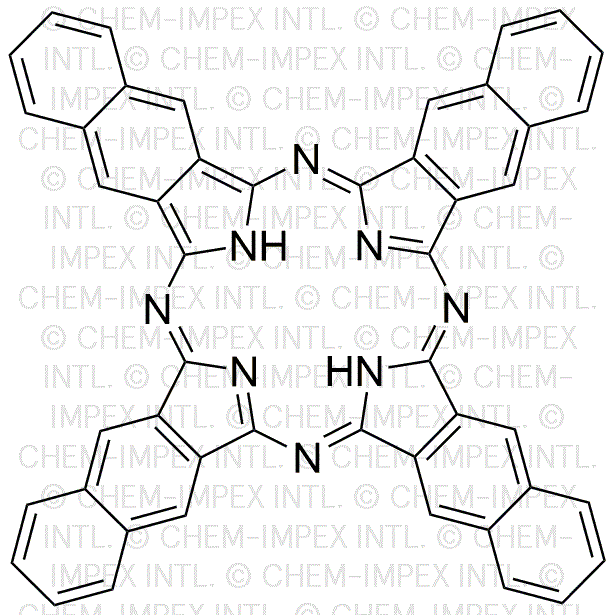2,3-Naphthalocyanine is widely utilized in research focused on:
- Photovoltaics: This compound is used in the development of organic solar cells, enhancing their efficiency due to its strong light-absorbing properties.
- Photodynamic Therapy: In medicine, it serves as a photosensitizer for cancer treatment, where it helps in targeting and destroying cancer cells when activated by light.
- Electronics: It is applied in the production of organic light-emitting diodes (OLEDs), contributing to brighter and more energy-efficient displays.
- Nanotechnology: The compound is utilized in the creation of nanomaterials, which can be used for drug delivery systems, improving the efficacy of medications.
- Colorants: It is employed as a dye in various industries, including textiles and plastics, due to its vibrant color and stability compared to traditional dyes.
General Information
Properties
Safety and Regulations
Applications
2,3-Naphthalocyanine is widely utilized in research focused on:
- Photovoltaics: This compound is used in the development of organic solar cells, enhancing their efficiency due to its strong light-absorbing properties.
- Photodynamic Therapy: In medicine, it serves as a photosensitizer for cancer treatment, where it helps in targeting and destroying cancer cells when activated by light.
- Electronics: It is applied in the production of organic light-emitting diodes (OLEDs), contributing to brighter and more energy-efficient displays.
- Nanotechnology: The compound is utilized in the creation of nanomaterials, which can be used for drug delivery systems, improving the efficacy of medications.
- Colorants: It is employed as a dye in various industries, including textiles and plastics, due to its vibrant color and stability compared to traditional dyes.
Documents
Safety Data Sheets (SDS)
The SDS provides comprehensive safety information on handling, storage, and disposal of the product.
Product Specification (PS)
The PS provides a comprehensive breakdown of the product’s properties, including chemical composition, physical state, purity, and storage requirements. It also details acceptable quality ranges and the product's intended applications.
Certificates of Analysis (COA)
Search for Certificates of Analysis (COA) by entering the products Lot Number. Lot and Batch Numbers can be found on a product’s label following the words ‘Lot’ or ‘Batch’.
Número de catálogo
Número de lote/lote
Certificates Of Origin (COO)
This COO confirms the country where the product was manufactured, and also details the materials and components used in it and whether it is derived from natural, synthetic, or other specific sources. This certificate may be required for customs, trade, and regulatory compliance.
Número de catálogo
Número de lote/lote
Safety Data Sheets (SDS)
The SDS provides comprehensive safety information on handling, storage, and disposal of the product.
DownloadProduct Specification (PS)
The PS provides a comprehensive breakdown of the product’s properties, including chemical composition, physical state, purity, and storage requirements. It also details acceptable quality ranges and the product's intended applications.
DownloadCertificates of Analysis (COA)
Search for Certificates of Analysis (COA) by entering the products Lot Number. Lot and Batch Numbers can be found on a product’s label following the words ‘Lot’ or ‘Batch’.
Número de catálogo
Número de lote/lote
Certificates Of Origin (COO)
This COO confirms the country where the product was manufactured, and also details the materials and components used in it and whether it is derived from natural, synthetic, or other specific sources. This certificate may be required for customs, trade, and regulatory compliance.


